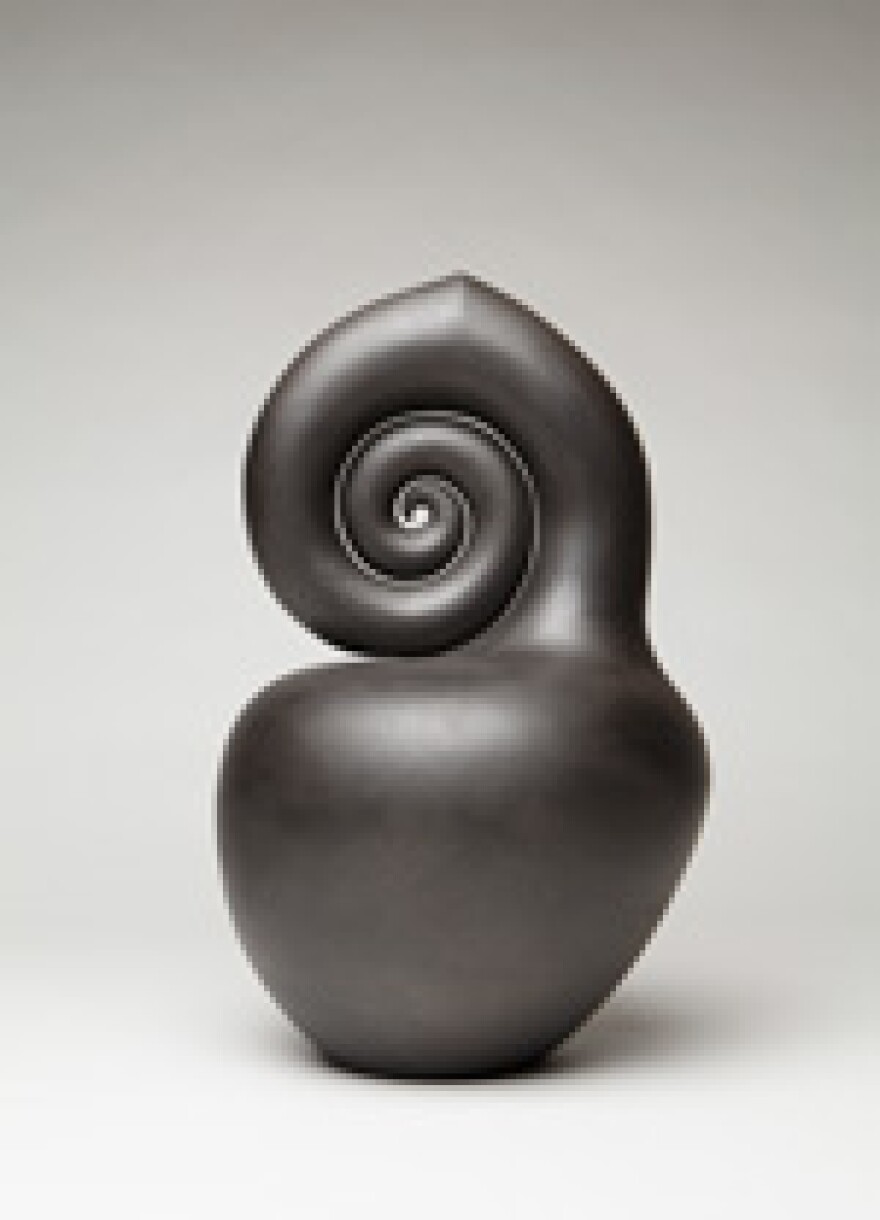The first floor galleries at the Nerman Museum of Contemporary Art are filled with glass display cases. Inside: the glittering black ceramics of Navajo artist Christine Nofchissey McHorse. Her abstract works bridge modern sculpture and traditional Southwestern pottery.
Carrying clay home on the bottom of shoes
Christine McHorse’s connection to clay began at an early age. McHorse grew up in Morenci, an Arizona mining town, but she spent summers on the Navajo reservation between Window Rock and Ganado, Arizona where she'd help herd her grandmother's sheep.
"We would find clay in the arroyos, especially on days it would rain," says McHorse. "You’d carry it home on your shoes, because it’s so sticky."
In 1963, when McHorse was 14, she joined her two sisters in Santa Fe, New Mexico to attend the Institute of American Indian Arts. At that time it was a high school and, as she describes it, an "experimental art school, a government-run boarding school." It was here she met her husband, Joel McHorse of Taos Pueblo, whose grandmother, Lena Archuleta, introduced her to micaceous clay.
Through the years, she's dabbled in painting, jewelry, and other media, but she's always returned to clay.
"I decided that I’m not really a big color person, but I love the clay," she says. "I love anything that can be molded, that is plastic."
The glittery surface of the clay
McHorse’s sculptural series of works at the Nerman Museum date from 1998 to the present. All use micaceous clay. The black surfaces of the pots - some with spikes, some curving - shimmer with mica.
"I can leave more mica in my clay if I like that more glittery effect," says McHorse. "But a lot of my pieces, I like that more satiny look. It’s got that sheen, but it doesn’t have that real glitter."
Micaceous pottery, sparkling golden or black, has traditionally been used for cooking and storage by the Navajo, Pueblo, and Apache peoples. It dates back at least 500 years.

McHorse draws on Taos and Navajo traditions – but also contemporary influences in creating her complicated structures. She says she’s interested in “invisible forces” and describes a work, resembling a coiled shell, called “Nautilus.”
"The spiral, I think, has a lot to do with, say a tornado, or a storm center. Even the nautiluses, the sea animals in their shells," she says. "Once I start on a small tube, like you see in the center, it’s hollow all the way to the center.
"It’s just as if I can’t stop, I just go and go and go. I like to push my limits, just to see what this clay is capable of doing. And that’s why I love this clay because I am able to do fantastic shapes with it."
Letting the work guide the direction
McHorse says she’s not always conscious of the direction of her work. The more she produces, she says, it's the work that shows her where she’s going. This could be spreading out sideways, such as creating three pieces that relate to each other, or scaling up.
"To me, it’s an experiment, it’s a challenge in constructing something I haven’t done before," she says.
The Nerman Museum of Contemporary Art launched the national tour of the exhibition, organized by The Ceramic Arts Foundation in New York, and curated by Garth Clark and Mark Del Vecchio. After the exhibition closes in Overland Park, it travels to Oklahoma and Texas.
Dark Light: the Ceramics of Christine Nofchissey McHorse continues through May 26, 2013, at the Nerman Museum of Contemporary Art, on the campus of Johnson County Community College, 12345 College Blvd., Overland Park, Kansas. 913.469.8500






